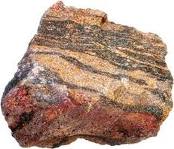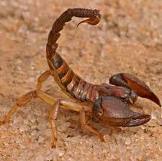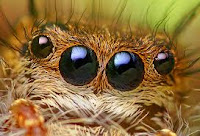A fish is exothermic, aquatic, vertebrate animal that breathes with gills and has fins used for movements, stability, and it's skin is covered with scales.
Ecological role: food provision. balance the ecosystem under water
Most fish are carnivores, they spend most of their time searching for food, they don't chew their food.
They can swim 10 body lengths per second
Can detect low vibrations in the water.
There are over 25000 species of fish
Some fish make sounds by grating their teeth
Wednesday, April 20, 2011
weather and climate
Geology
3 types of rocks:
Igneus: sandstone
Sedimentary: chert stone
metamorphic: marble stone
Earth structure: inner core, outer core, mantle, crust
Weathering: the breaking down of rocks (chemical, mechanical, biological)
Erosion: particles taken from one area to another
Igneus: sandstone
Sedimentary: chert stone
metamorphic: marble stone
Earth structure: inner core, outer core, mantle, crust
Weathering: the breaking down of rocks (chemical, mechanical, biological)
Erosion: particles taken from one area to another
Monday, April 18, 2011
Reptiles
Order crocodilians:
Nile crocodile: It has 4 heart chambers, doesn't shed, Only reptile that care for it's young
Order Chelonians
Tortoise: on land, retracts it's head straight backwards
Turtle: sea water, does not retract its neck
Tarrapin: Fresh water, retracts it's head side ways
Order squamata:
Snakes:
Python constricts its prey
Adders are cytotoxic
Black Mamba most dangerous snake in SA and quickest
Vine snakes is the only snake that doesn't have a anti-venom
Interesting facts:
They can go days without eating
Most snakes are not poisonous
More Americans die of bee stings than snake bites
Nile crocodile: It has 4 heart chambers, doesn't shed, Only reptile that care for it's young
Order Chelonians
Tortoise: on land, retracts it's head straight backwards
Turtle: sea water, does not retract its neck
Tarrapin: Fresh water, retracts it's head side ways
Order squamata:
Snakes:
Python constricts its prey
Adders are cytotoxic
Black Mamba most dangerous snake in SA and quickest
Vine snakes is the only snake that doesn't have a anti-venom
Interesting facts:
They can go days without eating
Most snakes are not poisonous
More Americans die of bee stings than snake bites
Insects
Insects are the largest order of animals.
Order of coleoptera
Dungbeetles, roll balls out of dung, and lay their eggs in it.
Blisterbeetles, display warning colours and contains a drug that can give you blisters

Glow worms: flying males produce flashing light others have a steady glow
Ladybirds are predatory, can eat up to 5000 aphids in a lifetime
Ants never sleep and can carry more than it's body weight
Honey bees: there are 4 species of honey bees
Ant- lion represent dragonflies, larvae create a funnel shaped pits
Order Diptera
Mosquitos bread in still water, only females need to drink blood
Houseflies clean itself after eating, and can't swallow solid food
Order hemiptera (bugs)
Spittle bugs sucks sap from host plants
Assassin bugs can give painful bites
Scale insects live for 2-3 days
Order lepidoptera (moths and butterflies)
Wings are covered with scales
Moths hold wings open
butterflies hold their wings closed
Ecological role of insects:
Important rectors
waste disposal
Maintain balance in nature
Food provision
Pollinators
Order of coleoptera
Dungbeetles, roll balls out of dung, and lay their eggs in it.
Blisterbeetles, display warning colours and contains a drug that can give you blisters

Glow worms: flying males produce flashing light others have a steady glow
Ladybirds are predatory, can eat up to 5000 aphids in a lifetime
Ants never sleep and can carry more than it's body weight
Honey bees: there are 4 species of honey bees
Ant- lion represent dragonflies, larvae create a funnel shaped pits
Order Diptera
Mosquitos bread in still water, only females need to drink blood
Houseflies clean itself after eating, and can't swallow solid food
Order hemiptera (bugs)
Spittle bugs sucks sap from host plants
Assassin bugs can give painful bites
Scale insects live for 2-3 days
Order lepidoptera (moths and butterflies)
Wings are covered with scales
Moths hold wings open
butterflies hold their wings closed
Ecological role of insects:
Important rectors
waste disposal
Maintain balance in nature
Food provision
Pollinators
Tuesday, April 12, 2011
Biomes
A biome is a large naturally accuring community with fauna and flora. It is unique.
SA has the third most biomes in the world (8)
The 8 biomes is:
SA has the third most biomes in the world (8)
The 8 biomes is:
- Forest
- grassland
- Savannah (biggest in SA)
- Desert
- Succulent Karoo
- Nama Karoo
- Thicket
- Fynbos (SA is the only country with fynbos, richest in plant species)
Arachnida
Scorpions:
They have 8 legs and 3 body parts
They are found world wide, except in Antartica
They extrude silk from upto six types of silk glands whithin their abdomen
most spiders have cytotoxic venom, but some have neurotoxic venom
Web:
Black button spider:
- There are 172 different species in S.A
- Scorpionidae: Large pincers, thin tail
- Hadogenus: large flat bodies, venom not deathly
- Buthidae: large tail, small pincers, venom is deathly
- Large pincers, small tails
- Use pincers to catch prey (insects, spiders grasshoppers)
- Found in dry places
- When alarmed they hiss
- Thick tail
- Pose little threat to humans
- Last part of tail has venom in, the gland is in muscle, so when the muscle contract the venom comes out.
- They are grayish- yellow
- The sting is very dangerous
- Can squirt venom in eyes and blind you
- Long and thick tail
- Thin pincers
- thick tail
- Before they mate, it looks like they do a dance and it can last several hours
- They are yellow-orange with black markings
- live in sparsely populated desert
They have 8 legs and 3 body parts
They are found world wide, except in Antartica
They extrude silk from upto six types of silk glands whithin their abdomen
most spiders have cytotoxic venom, but some have neurotoxic venom
Web:
- It is used to catch food
- If something gets stuck in the web, the the spiders know immediately how big it is and where on the web it is
- They can change webs to adapt to environment
- Some birds use webs to make their nests
Black button spider:
- Black with red markings
- Most dangerous in SA
- venom is neurotoxic
- Egg sack: smooth, 10mm
- Long legs
- very aggressive
- venom is cytotoxic
- Sacs are shiny and tough
- lot deadly, but wound can be easily infected
- Brick brown colour
- Nocturnal
- Venom is cytotoxic and cause severe infection
Sunday, April 10, 2011
weekend 9-10 April
This weekend I did my first tractor drives on my own. It went very well and I enjoyed it. I also went on a nightdrive where I did some of the talking, I also learnt a lot. I helped out at at entertainment, we played Bingo, tenpin bowling, frisbee golf and I taught the kids how to dance. I enjoyed working with the kids.
Thursday, April 7, 2011
Astronomy
Universe: Everything that exists
Galaxy: It is a lot of stars that is close together, caused by gravitational force. There are more than 170 billion galaxies in the universe.
Constellations: it is pictures that are made in the stars, it is believed to show signs. Astronomers made these constellations, to break up the stars from viewing point. there are88 constellations.
Solar system: It is the 8 planets that moves in the orbits around the sun: mercury, Venus, Earth, mercury, Jupiter ( biggest), Saturn( only one with a ring), Uranus, Pluto( is not seen as a planet any more).
Phases of he moon: As the moon circles the earth, the shape of the moon changes, it is because the earth comes between the sun and the moon. when the moon is completely blocked out, it is called a Lunar eclipse
Solar eclipse: it is when the moon comes in between the earth and the sun and the sun is blocked out by the moon, it only last a few seconds, and can only be seen at a certain point on earth.
Tides: It is the rise and fall of sea levels, caused by the gravitational force of the moon and the sun on the water. Most places on earth have 2high and 2 low tides per day
Milky way: It is our galaxy, It's a broad band of stars from viewing point. It has 100-400 billion stars.
Shooting stars: It is a ball of dust and gasses that hits the atmosphere and disintegrates immediately
Meteorites: a solid rock from space entering the atmosphere and crashing into earth
Galaxy: It is a lot of stars that is close together, caused by gravitational force. There are more than 170 billion galaxies in the universe.
Constellations: it is pictures that are made in the stars, it is believed to show signs. Astronomers made these constellations, to break up the stars from viewing point. there are88 constellations.
Solar system: It is the 8 planets that moves in the orbits around the sun: mercury, Venus, Earth, mercury, Jupiter ( biggest), Saturn( only one with a ring), Uranus, Pluto( is not seen as a planet any more).
Phases of he moon: As the moon circles the earth, the shape of the moon changes, it is because the earth comes between the sun and the moon. when the moon is completely blocked out, it is called a Lunar eclipse
Solar eclipse: it is when the moon comes in between the earth and the sun and the sun is blocked out by the moon, it only last a few seconds, and can only be seen at a certain point on earth.
Tides: It is the rise and fall of sea levels, caused by the gravitational force of the moon and the sun on the water. Most places on earth have 2high and 2 low tides per day
Milky way: It is our galaxy, It's a broad band of stars from viewing point. It has 100-400 billion stars.
Shooting stars: It is a ball of dust and gasses that hits the atmosphere and disintegrates immediately
Meteorites: a solid rock from space entering the atmosphere and crashing into earth
Build a nest
Today we unleashed our creativity. We built nests of a Hamerkop and a cup nest. We weaved all the grasses and used leaves and cut grass to make it soft for the eggs. The Hamerkop's nest was huge with a nice space for the eggs. It was a very interesting experience and learnt a lot from it. I have a lot more respect for birds now, they make it look so easy!
Wednesday, April 6, 2011
Ampibians
- Name means 2 lives
- They never drink water
- Frogs skin is moist
- Skin shed every 4-10 days
- some Frogs skin can change colour
- Some species have toxic skin glands
- Smooth skin
- jump very high
- excellent swimmers
- vocal
- Rough skin
- secrete bufotoxin from glands ( defense)
- Don't jump so high
- Can't swim well
- Tadpoles are smaller and darker then frog's
- Advertisement call (mating)
- aggressive call
- Distress call
- Time sharing call
- Singular vocal sac
- Paired vocal sac
- Lateral paired vocal sac
Clasping positions:
- Adhesion (in deep water) glued together
- Inguined (on land) Male hold female at " hips"
- Axillary clasp ( shallow water) Male clasp female just behind front legs
- when they are cold their skin gets darker
- If pigments are clumped, it's darker, if it is spread, it's lighter
- Eggs
- larvae
- tadpole
- frog let
- adult
- Most important defense magnetism
- Toxic can be absorbed through skin
Guttural toad:
- Body: grey brown, nearly black, with irregular spots
- feels rough
- Call: deep vibrant guttural snore
- Aggressive invader
- Light brown, red patches on thigh
- Call: slow "wong wong wong"
- Useful near houses- they eat insects
- Smooth back
- Call: very slow boom
- Massive body
- Regarded as a valuable source of protein and fat by rural people
- Solitary in deep marshes and swamps
Tuesday, April 5, 2011
Ecology
It is the interaction between organisms and their environment.
Trophic pyramid:
Law of tolerance:
The amount of something a organism can take before it dies.
Law of minimum:
The minimum a organism need to survive
Hydrological system:
It describes the movement of water above, on, and below the earth surface.
Para- magnetism
It's the ability of rock dust to store energy from light, that can be released to the surrounding plant roots known as para- magnetic energy.
Succession:
It's the action of one party (person or product) being replaced by the other that has become absolete, incompasitated, retired or deceased.
Simbiosis:
Intimate relationship between different species living together.
Mutualism: both organisms benifit from the relationship.
Commensialism: one organism benefit, the other one does not get affected.
Parasitism: One organism benifits and the other oneis harmed.
Organisms:
Living things-multi and unisellular.
Needs: energy, water, air, shelter, nutrients.
Ecosystems:
All individuals of the same species = population, populations together= communities, communities+abiotic part= ecosystem.
Termite mound:
Go deep down inside the ground.
Different compartments
The queen lives in one compartment where she gets fed and have babies.
Termites take leaves and twigs, under ground and secretes a fluid on it, wait for it to get fungus then eat it.
Earth pigs scratch it open and eat termites
Termites: Fertalise soil, and decompose.
Trophic pyramid:
Law of tolerance:
The amount of something a organism can take before it dies.
Law of minimum:
The minimum a organism need to survive
Hydrological system:
It describes the movement of water above, on, and below the earth surface.
Para- magnetism
It's the ability of rock dust to store energy from light, that can be released to the surrounding plant roots known as para- magnetic energy.
Succession:
It's the action of one party (person or product) being replaced by the other that has become absolete, incompasitated, retired or deceased.
Simbiosis:
Intimate relationship between different species living together.
Mutualism: both organisms benifit from the relationship.
Commensialism: one organism benefit, the other one does not get affected.
Parasitism: One organism benifits and the other oneis harmed.
Organisms:
Living things-multi and unisellular.
Needs: energy, water, air, shelter, nutrients.
Ecosystems:
All individuals of the same species = population, populations together= communities, communities+abiotic part= ecosystem.
Termite mound:
Go deep down inside the ground.
Different compartments
The queen lives in one compartment where she gets fed and have babies.
Termites take leaves and twigs, under ground and secretes a fluid on it, wait for it to get fungus then eat it.
Earth pigs scratch it open and eat termites
Termites: Fertalise soil, and decompose.
Subscribe to:
Comments (Atom)




























